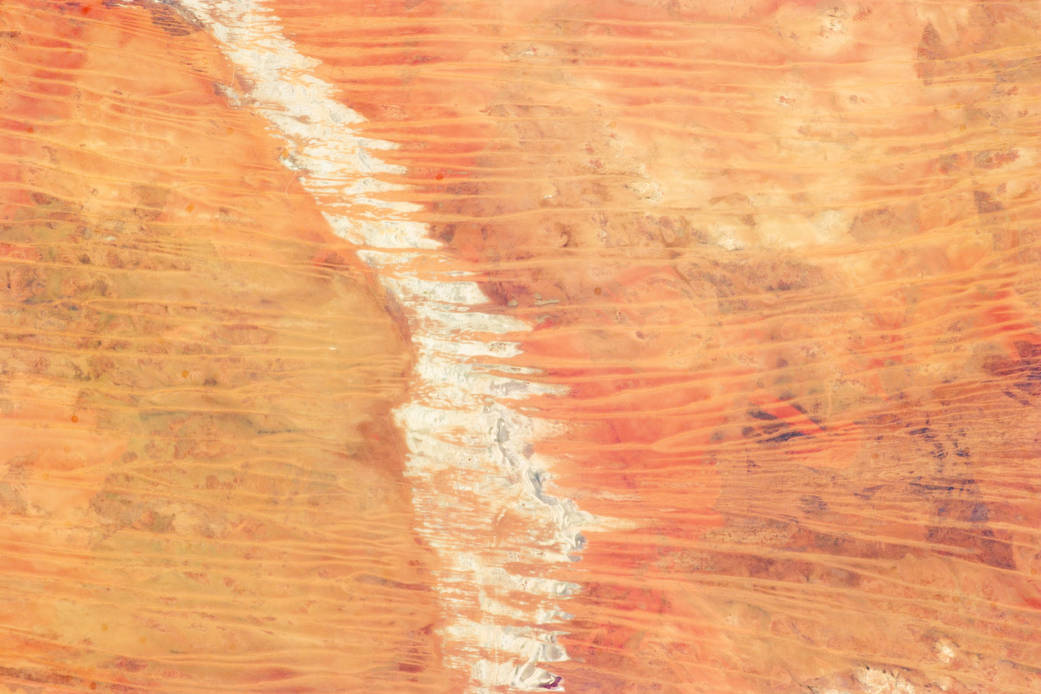
In northwest Australia, the Great Sandy Desert holds great geological interest as a zone of active sand dune movement. While a variety of dune forms appear across the region, this astronaut photograph features numerous linear dunes (about 25 meters high) separated in a roughly regular fashion (0.5 to 1.5 kilometers apart). The dunes are aligned to the prevailing winds that generated them, which typically blow from east to west. Where linear dunes converge, dune confluences point downwind. When you fly over such dune fields-either in an airplane or the International Space Station-the fire scars stand out. Where thin vegetation has been burned, the dunes appear red from the underlying sand; dunes appear darker where the vegetation remains.
Astronaut photograph ISS035-E-9454 was acquired on March 25, 2013, with a Nikon D3S digital camera using a 400 millimeter lens, and is provided by the ISS Crew Earth Observations experiment and Image Science & Analysis Laboratory, Johnson Space Center. The image was taken by the Expedition 35 crew. It has been cropped and enhanced to improve contrast, and lens artifacts have been removed.Image Credit: NASA



























